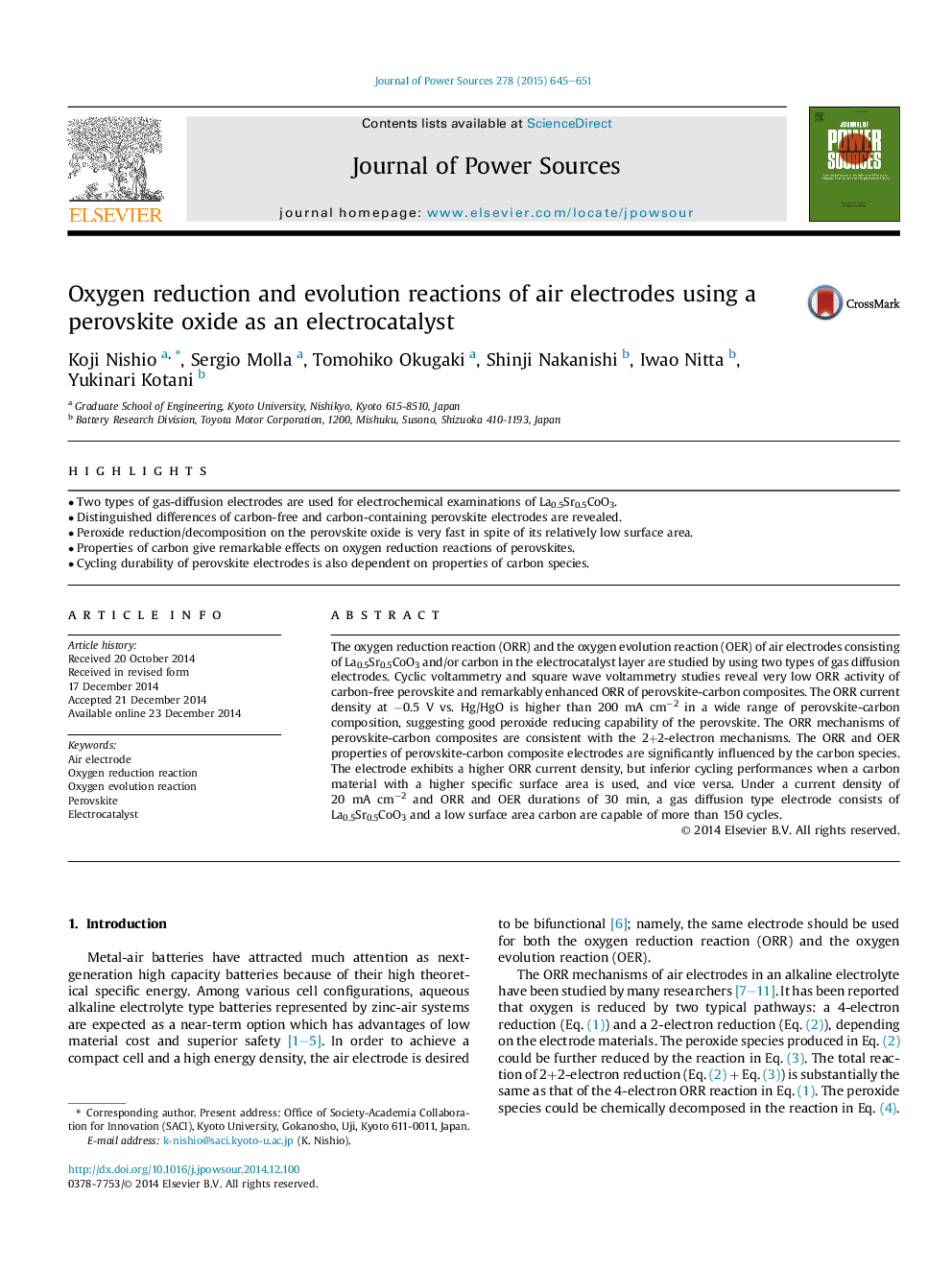| Article ID | Journal | Published Year | Pages | File Type |
|---|---|---|---|---|
| 7733924 | Journal of Power Sources | 2015 | 7 Pages |
Abstract
The oxygen reduction reaction (ORR) and the oxygen evolution reaction (OER) of air electrodes consisting of La0.5Sr0.5CoO3 and/or carbon in the electrocatalyst layer are studied by using two types of gas diffusion electrodes. Cyclic voltammetry and square wave voltammetry studies reveal very low ORR activity of carbon-free perovskite and remarkably enhanced ORR of perovskite-carbon composites. The ORR current density at â0.5 V vs. Hg/HgO is higher than 200 mA cmâ2 in a wide range of perovskite-carbon composition, suggesting good peroxide reducing capability of the perovskite. The ORR mechanisms of perovskite-carbon composites are consistent with the 2+2-electron mechanisms. The ORR and OER properties of perovskite-carbon composite electrodes are significantly influenced by the carbon species. The electrode exhibits a higher ORR current density, but inferior cycling performances when a carbon material with a higher specific surface area is used, and vice versa. Under a current density of 20 mA cmâ2 and ORR and OER durations of 30 min, a gas diffusion type electrode consists of La0.5Sr0.5CoO3 and a low surface area carbon are capable of more than 150 cycles.
Related Topics
Physical Sciences and Engineering
Chemistry
Electrochemistry
Authors
Koji Nishio, Sergio Molla, Tomohiko Okugaki, Shinji Nakanishi, Iwao Nitta, Yukinari Kotani,
